Perched on the northernmost edge of Stara Zagora province, right in the heart of Bulgaria, Buzludzha monument’s sci-fi architecture, history and setting cast a powerful spell.
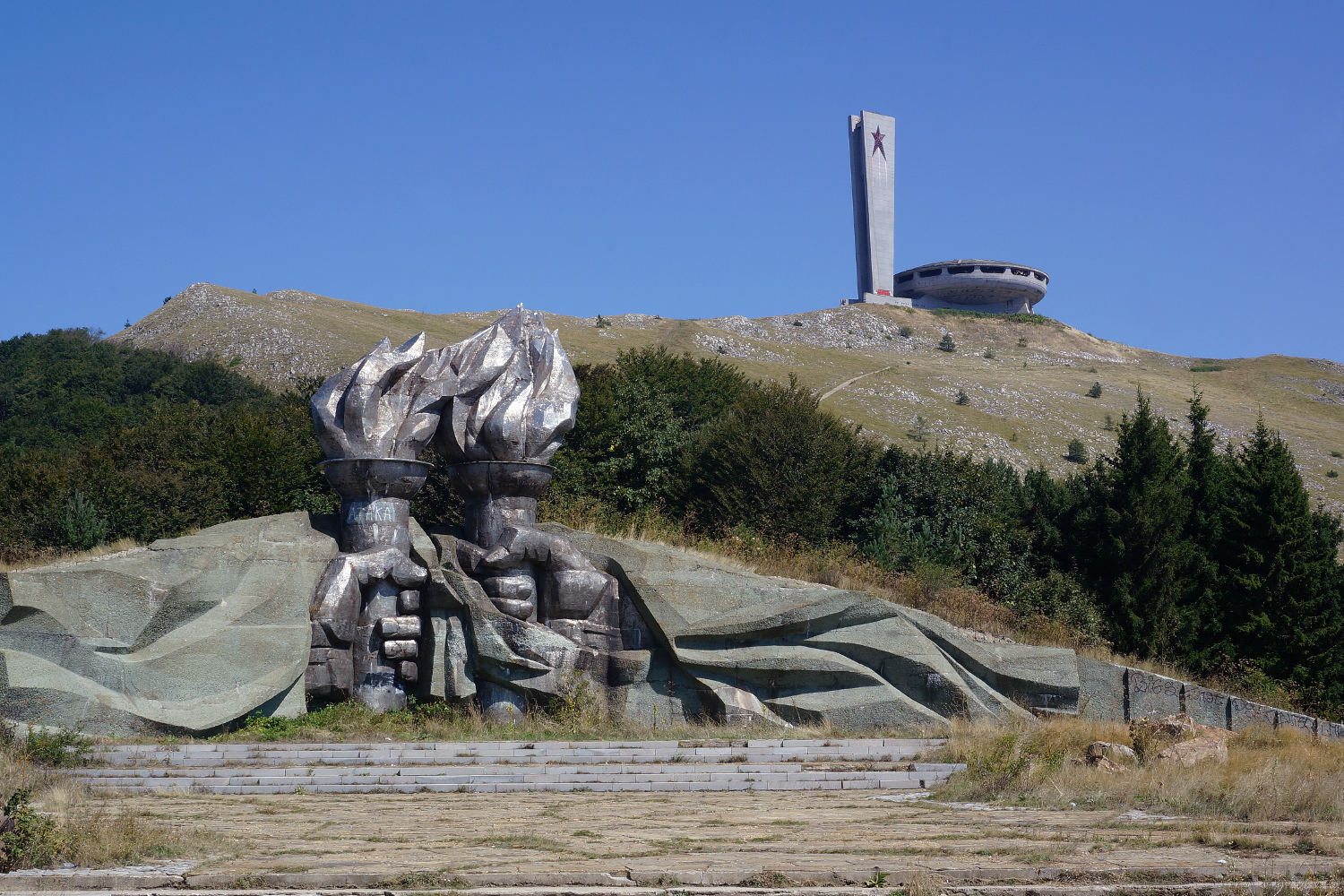
Originally built as a socialist assembly hall, the UFO-like structure has been abandoned for decades. While it isn’t uncommon for buildings associated with faded regimes to moulder away, it’s impossible for this mountaintop monument to slide into obscurity. It creates a Starship Enterprise silhouette in an otherwise wild and rugged part of Bulgaria. It’s visible for miles around. It stands on a symbolic pinnacle of Bulgarian identity, where the Battles of Shipka Pass were fought.
This bucolic region sees only a trickle of foreign travellers. Most visit Shipka (10km southwest of Buzludzha) to see its remarkable pink and gold church, or Kazanlâk (12km further south), the gateway to Bulgaria’s Rose Valley. But the ‘Bulgarian UFO’ is increasingly tempting day-trippers to drive here from historic cities Plovdiv and Veliko Târnovo (about two hours’ drive south and north, respectively).
Along cliffside roads with hairpin bends, I weave my way towards Buzludzha. These steep valleys are the site of a series of battles from the 19th-century Russo-Turkish War. During the Battles of Shipka Pass, Russian and Bulgarian fighters repelled Ottoman troops against incredible odds and in sub-zero conditions. By building a meeting hall here, socialists broke ground at a nexus of Bulgarian national pride.
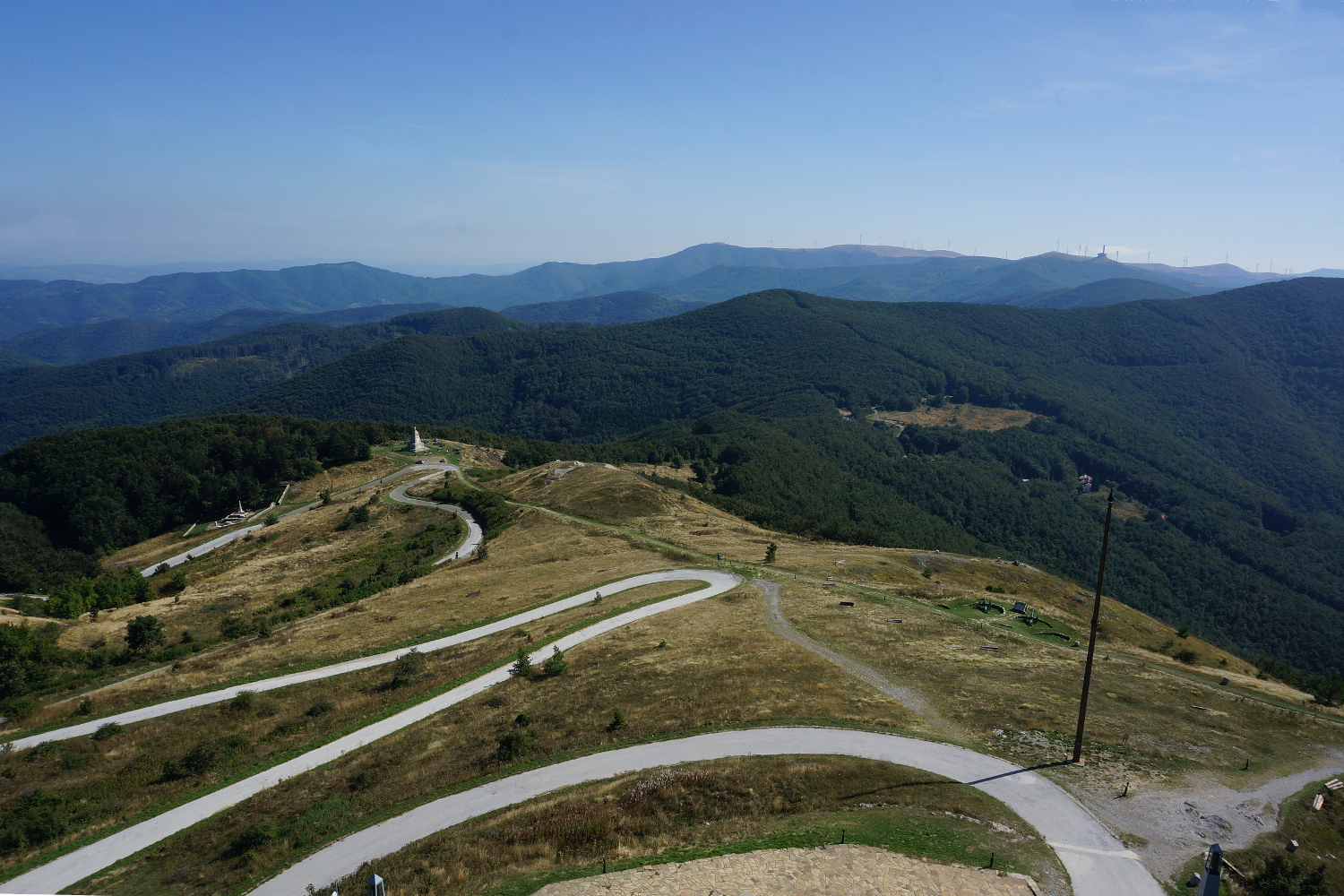
Halfway up the mountain lies a monument showing two boulder-sized fists, each clutching a flaming torch. After a few more kilometres of steep ascent, I reach the UFO, a vast ellipse of grey concrete that bulges from the summit. Its empty upper windows look like eye-sockets in an alien head. To its side, a steely turret juts from the ground, crowned with a mosaic of red glass in the shape of a star. Dilapidation has done little to dim this monument’s visual impact.
On the exterior wall, slogans in huge concrete letters urge workers towards glory. But today the dominant message is the striking red graffiti that warns, ‘Never forget your past’. Next to it, the word ‘Communism’ is redrawn as a Coca-Cola logo.
Gazing at the UFO building, it’s clear why it represents a paralysing dilemma for Bulgarians. Like much of the Balkans, Bulgaria fell under communist rule for decades after WWII, until the ousting of Todor Zhivkov in 1989. Memories of communism remain vivid, so the political implications of wrecking or repairing the monument (not to mention the cost) would require tact.
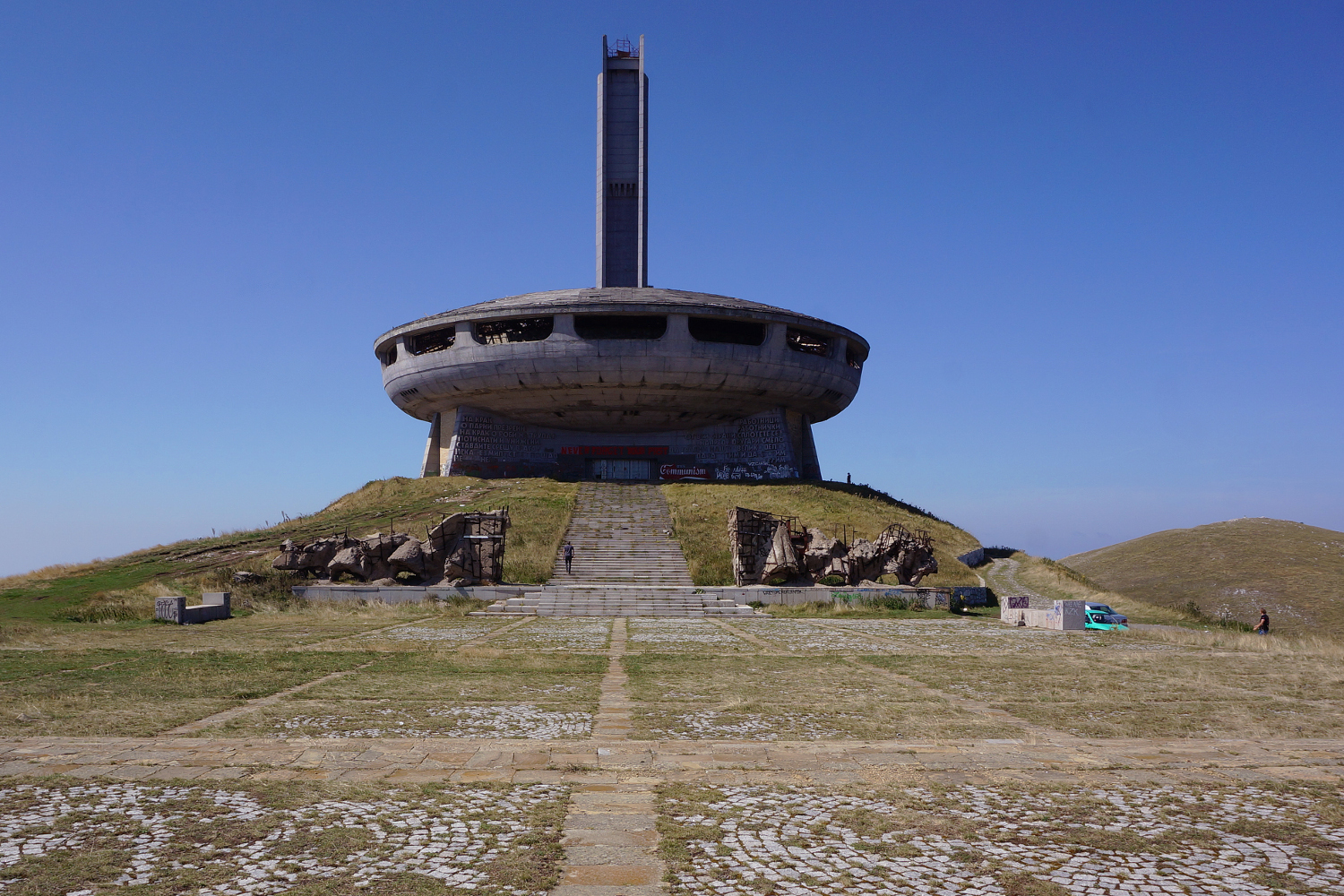
The road to the Buzludzha monument is accessible (though potholed) and there’s plenty of space to park nearby. Entering the monument is a different matter: due to the building’s high state of disrepair, people who go inside do so entirely at their own risk. The building stands in a remote part of Bulgaria and is not maintained. Authorities recently closed the main entrance because of considerable dangers such as falling concrete, broken glass, decaying stairs, and fears that the roof may one day collapse entirely. Before you make the trip, ask locally for the latest advice on access, safety and the legality of exploring the site.
For some, all this isn’t a deterrent. A panel on the right-hand side of the building has long ago been booted in, allowing enough crawl-space for the fearless and foolish to wriggle inside. It’s a tight squeeze – and in this crumbling building, anyone attempting it risks much worse than ripping their jeans.
Beyond the broken panel lies a stairwell laced in red carpeting, most of which has been tugged away. Broken glass and dust speckle the steps, and floorboards are missing.
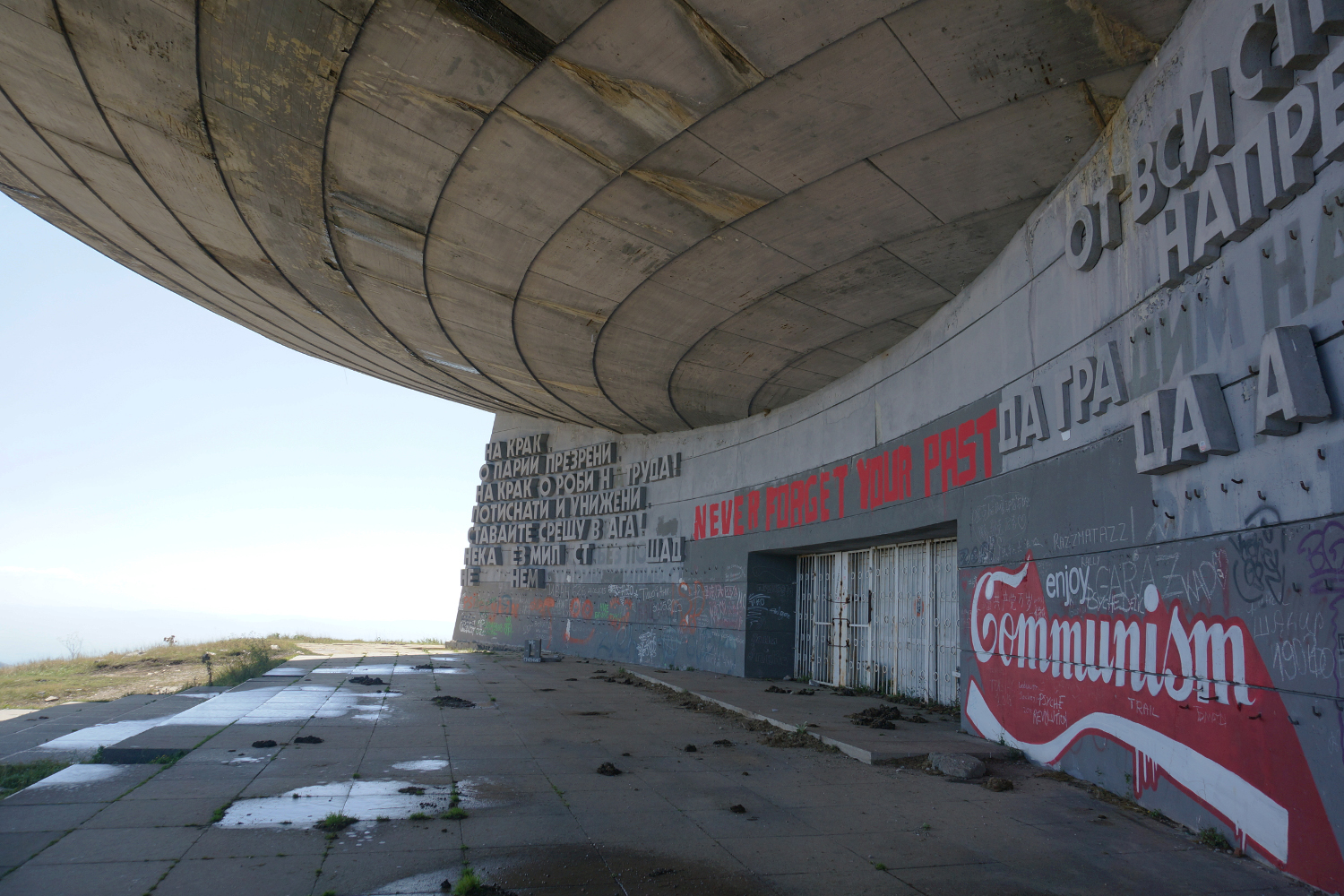
Crunching gingerly up the stairs – presently not advisable – I reach the cavernous main hall. And I’m not alone: two people taking photographs from a rotting stairwell look startled to see me walk in. Despite Bulgaria’s UFO hardly enjoying pride of place in tourism brochures, its reputation for otherworldly atmosphere is drawing visitors.
It’s easy to see why: inside the hall, mosaic portraits glow in shades of bronze and maroon. Some, like the face of ousted leader Zhivkov, have been scraped away entirely. Modern graffiti sit alongside these huge mosaic faces; ‘Lurkers of the world, unite’ has been daubed on one wall.
Craning my neck towards the latticed ceiling, I see that panels have fallen away from the dome, allowing light to dapple the dirty floor. Still intact is the central motif: hammer and sickle. Clouds of dust hang thick in the air, pierced by beams of sunlight.
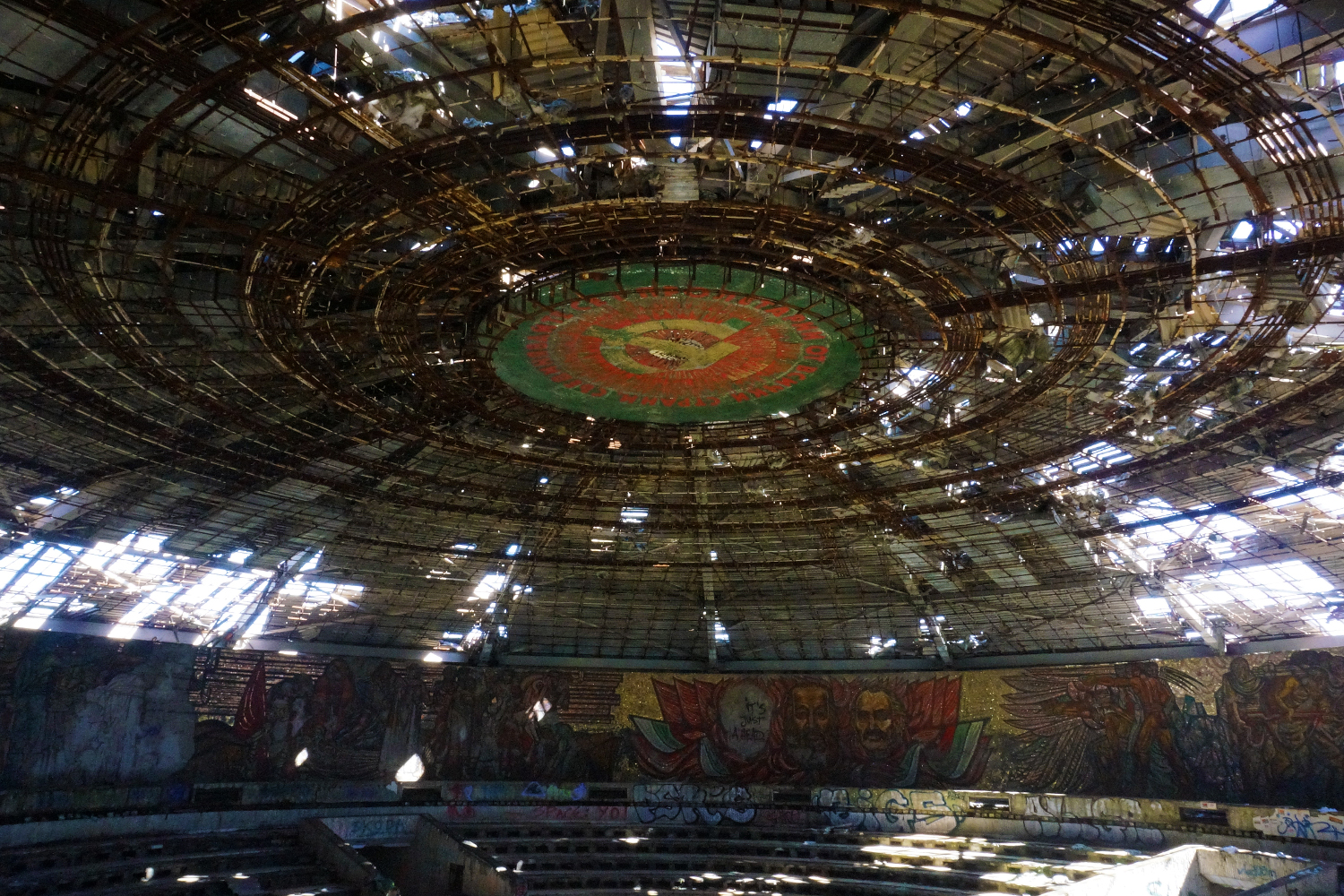
Certain times of year bring large groups to Buzludzha. Bulgaria’s Socialist Party organises an annual summer meeting here. And while 9 May, the anniversary of the Soviet Union’s victory over the Nazis, isn’t a national holiday in Bulgaria, some gather at this monument to mark the occasion. Discarded beer cans hint at less politically motivated meetings too, with locals whispering of secret parties held in the UFO.
Could the Buzludzha monument be Bulgaria’s next big tourist attraction? According to Hristo Petrov ([email protected]), who drives visitors on excursions around the country, foreign tourists tend to be awed by this saucer-shaped relic. ‘They definitely enjoy the experience, because they’ve never seen such a monument before’, says Hristo. Locals don’t always feel the same way. ‘For Bulgarian people, it is not such an attractive place’, he adds.
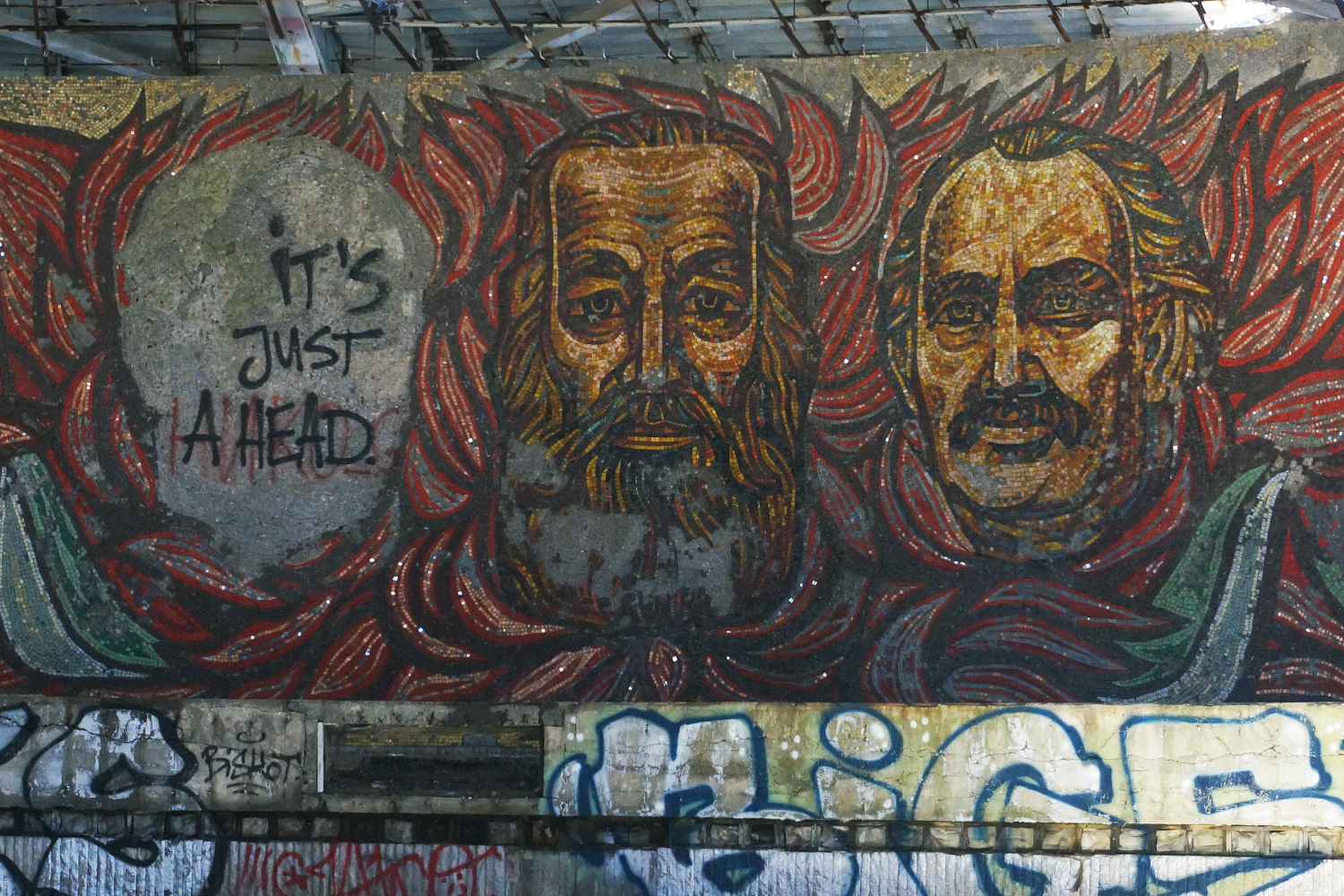
But for some young Bulgarians, especially those born after the fall of communism, exploring the UFO is a way to understand their country’s history.
‘I was born very soon after the end of the communist regime’, explains student Ivan Dzhamulov. ‘I have heard so many stories about the communist era, of how people used to live and how different it was, compared with democratic Bulgaria.’
In his spare time, Ivan leads walking tours of Plovdiv (freeplovdivtour.com) and he has noticed a great deal of visitor interest in Buzludzha. ‘Almost every time I have a tour, the tourists either ask me questions about the monument or they share their experiences and impressions of the place.’
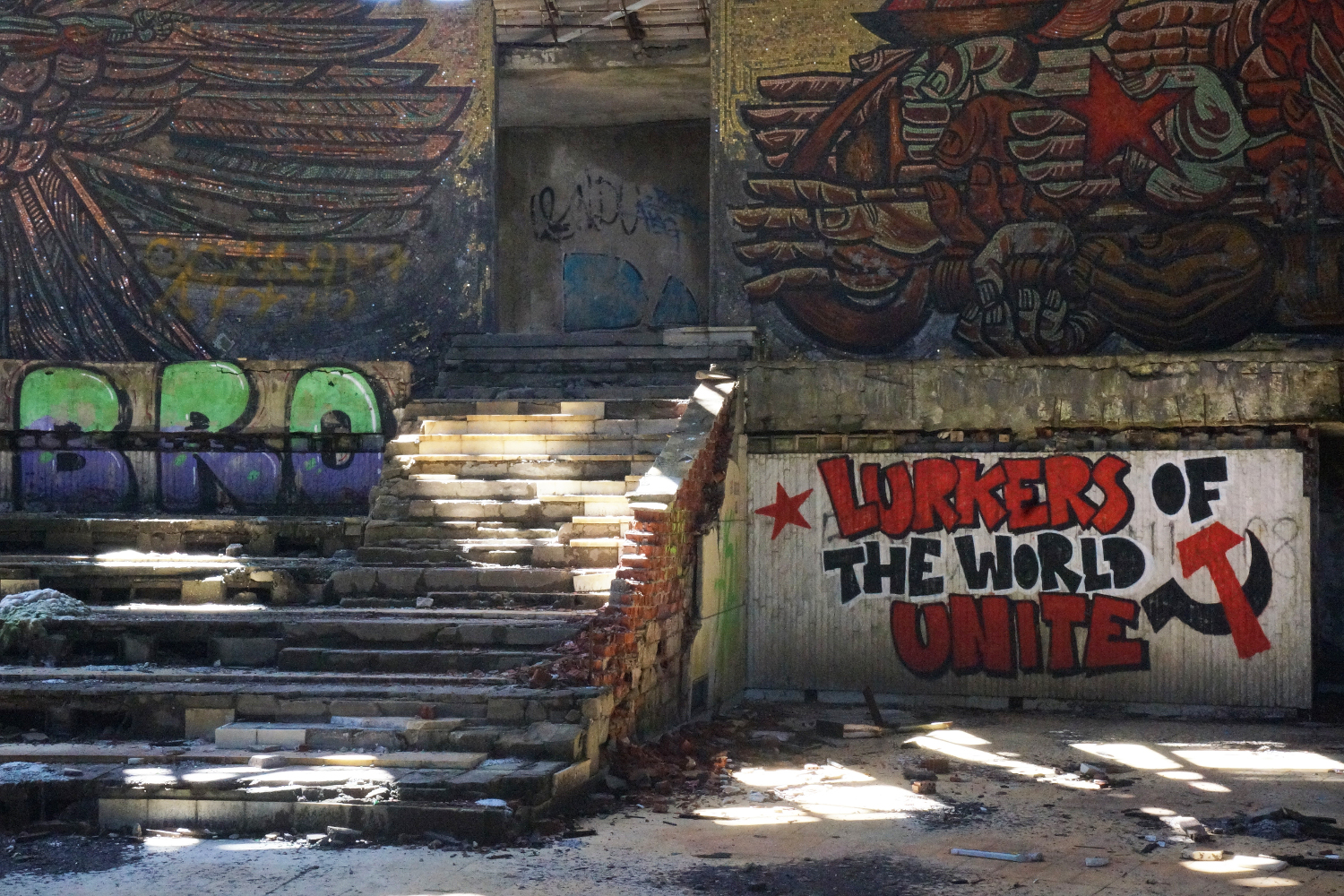
For Ivan, seeing the UFO is a way to contextualise Bulgarian history. ‘The Buzludzha monument definitely symbolises how times and ideologies have changed’, he explains. ‘Some time ago it was the most important building in Bulgaria, and take a look at it now – it is an abandoned building in very poor condition.’
Restoration is certainly hard to imagine at a site so worn by the passage of time. Today, wry graffiti make jest of lofty slogans on the monument walls. Creeper plants threaten to drag hunks of its masonry down into the soil. At this lonely place, disintegration and decay are a part of the allure.